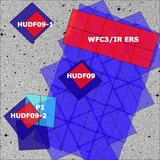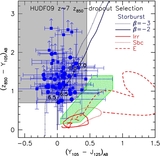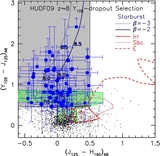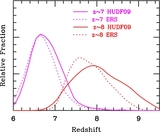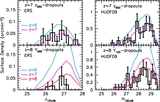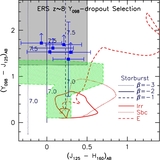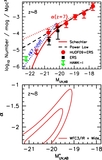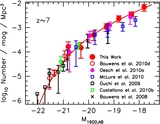Image Details
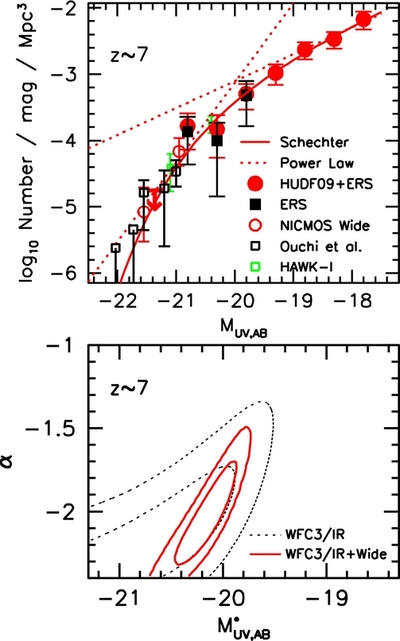
Caption: Figure 8.
Upper: rest-frame UV LF determination at z ~ 7 determined from the present WFC3/IR z ~ 7 samples (Section 5.1). The red circles, red downward arrow, and red line show our stepwise LF determination, the 1σ upper limit we have on the bright end of the LF from our WFC3/IR z ~ 7 searches, and best-fit Schechter LF, respectively. Also included in the upper panel are the LFs derived from a wide-area Subaru Suprime-Cam search (Ouchi et al. 2009), a wide-area NICMOS+ISAAC+MOIRCS search (Bouwens et al. 2010c: see also Mannucci et al. 2007; Stanway et al. 2008; Henry et al. 2009), and a wide-area HAWK-I search (Castellano et al. 2010b). The black squares show the z ~ 7 LF constraints from the wide-area ERS observations. These match up well with the LF constraints obtained from the deeper HUDF09 observations. The dotted red lines show the approximate asymptotic behavior (linear fit) of the z ~ 7 LF at the bright and faint ends. Together they illustrate the existence of a likely break in the LF at −20 AB mag. Lower: 68% and 95% confidence intervals on the characteristic luminosity M* and faint-end slope α from our WFC3/IR samples (dotted black lines: Section 5.2). Stronger constraints on M* and α can be obtained by incorporating wide-area z ~ 7 search results (solid red lines).
Copyright and Terms & Conditions
© 2011. The American Astronomical Society. All rights reserved.


